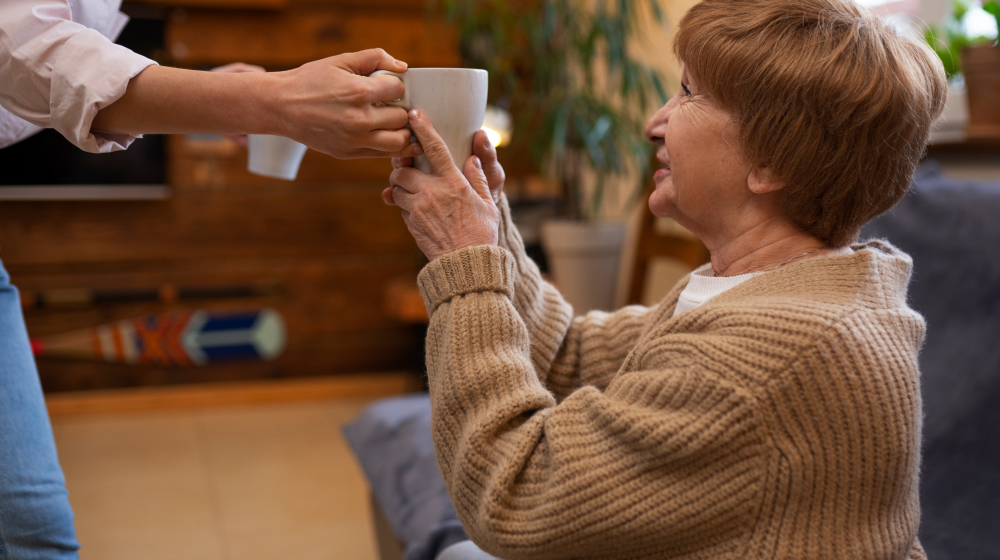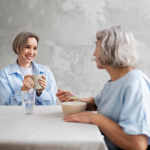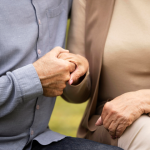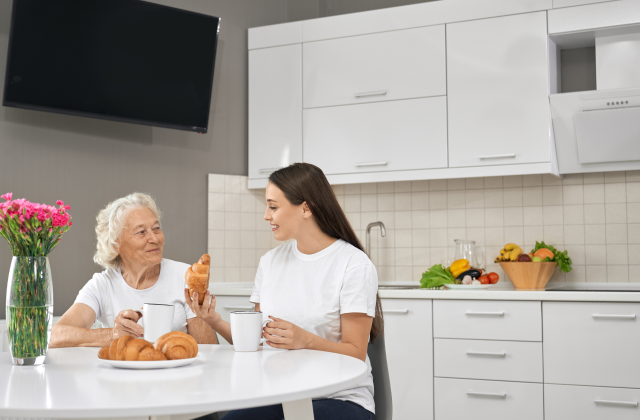What Home Health Aids (HHA) Are Really About in New York (2025)
Once in a family conversation you go from thinking, “Can we take care of this ourselves?” to “How do we manage to keep life safe, dignified, and familiar at home? It is time to think about what, if, anything, can be done about a Home Health Aide (HHA). In New York’s almost incomprehensible 2025 care environment – the complexity of dense, multi-lingual, regulated – the HHA acts as the undisputed practical link between a clinical plan to formalize care and everyday living, applying doctor’s directions and family objectives into a routine process – all managed as support, that feels personal, not procedural.
“An HHA’s value is not one of completing tasks, but of creating continuity – because that is the reason why every ordinary day is possible, predictable and secure.”
HHA in Plain English – And More than “Help at Home”
Home Health Aides provide hands-on, non-invasive support in New York, assigned under a nurse-directed plan of care. Although they are not nurses, they do operate within a professional framework: observe, assist, document, and report changes to the supervising clinician, which gives everyone confidence that HWAs will include oversight for a plan of care designed by the primary care nurse.
Typical responsibilities of an HHA (as assigned and trained) below.
- Personal care (ADLs): bathing, grooming, dressing, toileting, support with continence, safe transfers, assist with mobility.
- Eating and drinking: simple meal preparation following a dietary plan, set-up and support with eating, hydration reminders.
- Medication support: reminders and assistance with self-administration (eg., opening containers) – not clinically providing medication.
- Safety and monitoring: fall prevention routine, skin checks as directed, vital signs check and recording (if trained/assigned), document changes.
- Activity and exercise: range of motion and ambulation exercises as taught by the clinical team.
- Household tasks (IADLs): light housekeeping around the client’s care space, laundry and linen changes, shopping and errands for essentials.
- Companionship & orientation: conversation, cueing, calendar reminders, and accompany to appointments as planned.
“In New York, HHAs extend the reach of clinical teams into the home—not replacing clinicians, always reinforcing the plan.”
Important: What the HHA does is defined by nurses care plan, state regulations, and agency policy. HHAs do not perform invasive procedures or come to conclusions effecting clinical judgments independently.

Who Actually Needs an HHA (vs. Something Else)
Select an HHA when the person:
- Needs hands on personal care and basic health-related under RN oversight.
- Is post hospital or post-rehab, where daily follow-through is needed for safety and reconditioning.
- Lives with chronic conditions (cardio-metabolic, COPD), cognitive changes (dementia), or increased fall risk where benefit is found in structured routines as well as cueing and monitoring.
- Is homebound for a period, where the consistent assistance will prevent decline.
Select a Personal Care Aide (PCA) when the need is for mostly non-health personal care and basic household help.
Select a Nurse (RN/LPN) when clinical interventions (wound care, injections, clinical medication administration, assessments) are needed.
HHA vs. PCA vs. Nurse: Who Does What (At a Glance)
| Role | Core Focus | Examples of Tasks | What They Don’t Do |
| HHA | Personal care + basic health support under RN supervision | Bathing, dressing, safe transfers, hydration prompts, meal prep per diet, reminders for meds, vitals/ROM if trained & assigned, observation & reporting | Injections, sterile dressings, independent clinical decisions, changing medication orders |
| PCA | Non-medical personal & household support | Hygiene assistance, light housekeeping, errands, companionship | Any health-related tasks requiring nurse oversight |
| Nurse (RN/LPN) | Clinical care & supervision | Assessments, wound/ostomy care, injections, med administration, care-plan updates, HHA supervision/teaching | Extended non-clinical household tasks |
Note: Scope will vary by care plan, payer rules, and agency; always confirm what is authorized by your case.
A Day With An HHA: Dignity In The Details
- Morning reset: unhurried wake, hygiene, skin care, dressed for the day, safe transfer training supported, breakfast consistent with prescribed diet.
- Midday structure: medications on time with reminders, gentle activity or ROM exercise, hydration reminders, light tidy-up of care area, or walk if safe.
- Evening wind down: dinner prepared, toileting routine laid out, comfortable attire for the night, environment check (lighting, paths cleared, devices charged), notes for the RN documented.
“Consistency is healing – when smaller tasks are executed the same predictable way, strength and comfort come back.”
2025 Realities in New York: Access, Payers, and Expectations
- Care settings: care is either provided by Licensed Home Care Services (LHCS) Agencies or as part of Certified Home Health Agencies (CHHAs) for Medicare qualifying episodes where skilled care is present.
- Payers: private pay, managed long-term care for Medicaid, specific long-term care insurance, and Medicare home health if the vetted criterion are met under a skilled plan.
- Training & oversight: HHAs receive state-approved training and execute tasks based on a plan written by a nurse; agencies provide supervision, in-service training, and reassessment.
- Trends (2025): more dementia capable care, tighter infection control routine, RN check-in visits via telehealth, better data capture (falls, vitals, nutrition adherence) to keep plan relevant.
Safety & Quality: What Families Should Observe
- Fall prevention by default: clear paths to, and around surfaces, use non-slip surfaces, transfer techniques practiced and visual check of footwear.
- Medication safety: reminders aligned with the exact physician list; any variances escalated to the nurse.
- Skin integrity: at risk areas checked as directed; repositioning and shower/skin care plan carried out.
- Escalation culture: new cough, fever, confusion, swelling, pain, or appetite changes documented and reported – early.
How Angel Care NY Delivers HHA Support
- Start by listening: a brief call to capture goals, history, preferences, language needs and risk.
- In-home assessment and plan: RN translates goals into a stepwise and scheduled tasks.
- Match-matching and Onboarding: we match skills, temperament, languages, and availability; we facilitate introductions before we “start.”
- Stabilization: the first two weeks are fine-tuning (what works well, what does not work well, what we are going to adjust).
- Ongoing oversight: nurse check-ins, family updates, rapid cover when an HHA is out, and measurable quality indicators (falls, hospitalizations, satisfaction)
Service Modalities & When They Fit
| Modality | Billing Unit | Best For | Notes |
| Hourly (shifts) | Hourly | Daytime needs, evenings, or nights; flexible coverage | Build only the hours you need; ideal when nights are active |
| Live-in | Daily rate | Stable, predictable routines with intermittent night needs | Requires suitable sleep & break arrangements for the aide |
| Split shifts | Hourly (AM/PM) | Morning/evening peaks with mid-day independence | Efficient for ADL clusters (getting up/settling in) |
Costs vary by borough, shift pattern, and acuity; request a written estimate aligned to your exact plan of care.
Checklist for Deciding: Choosing an HHA Agency in NY
- Licensing & compliance: LHCSA/CHHA status; clear plan-of-care processes.
- HHA credentials: state-approved training; registries listing; with ongoing inservices.
- RN supervision: frequency of visits/check-ins; the process for change.
- Coverage plan: contingency plans for illness, holidays, weather; 24/7 call line.
- Fit: language, cultural alignment, dementia experience as desired.
- Transparency: scope in writing, schedules, rate sheet, and escalation pathways.
Frequently Asked Questions (HHA, New York 2025)
- Is an HHA medical staff?
HHAs are non-medical paraprofessionals who work under a nurse’s plan. They support clinical instructions but do not do invasive procedures or have clinical decision-making ability. - Can an HHA administer medications?
They can remind and assist with self-administration (i.e., set-up, open containers), per plan and policy. Clinical administration is to professionally licensed clinicians unless part of a specific delegation program. - How is an HHA different than a “companion”?
Companions provide social support and light satisfaction, while an HHA provides personal care and health-related practice while under RN supervision. - How many hours should we start with?
Begin with the highest risk times (morning/evening and bathing and/or transfers) and expand or contract the hours based on perceived need. - Can we change aides?
Yes. Angel Care, Inc. facilitates transitions to ensure continuity and comfort.
Getting Started with Angel Care, Inc. (New York)
- Call for a no-pressure consultation. We identify your desired goals, payor options, and assess next steps.
- Schedule an in-home RN assessment. We put goals into a safe, actionable plan.
- Meet your aide and begin. We monitor closely and provide updates.
“Care that is technically sound and emotionally intelligent—that’s our promise to every family. We serve.”

When a family faces the need for daily support—whether for themselves or a loved one—it’s vital to understand not only who will help, but how that help will actually be organized. Personal Care Assistance NY (PCA) is a structured, at-home care program in which every action of the aide serves one purpose: to preserve a person’s familiar routine, safety, and dignity—without uprooting them from their home. “The core value of PCA isn’t in isolated services, but in a stable, adaptable care system that conforms to the person—not the other way around.” PCA in Plain Terms—and Why It’s More Than “Help Around the House” PCA provides assistance with Activities of Daily Living (ADLs) and related household tasks (IADLs) so that each day remains safe and predictable: Personal hygiene and grooming: help with showering, washing, shaving, hair and skin care. Dressing and mobility: assistance with dressing, moving around the home, and supported walking. Nutrition: preparing simple meals tailored to dietary needs, serving food, and supporting mealtime. Day-to-day safety monitoring: accompaniment at home, fall prevention, observation of general well-being. Medication reminders (without clinical calculations or procedures). Household tasks: light housekeeping, laundry, changing linens, essential shopping. Social support: conversation, reading, accompaniment on walks or visits. Important: PCA is not nursing. A personal care aide does not perform injections, wound care, or other clinical procedures. Yet PCA provides the essential “fabric of everyday life,” without which medical recommendations often remain theoretical. “PCA is the daily rhythm of support that quietly connects many small tasks into one normal day.” Who Benefits from Personal Care Assistance NY Older adults who find hygiene, cooking, or cleaning increasingly difficult. People recovering from illness or surgery who temporarily need extra help. Individuals with chronic conditions, cognitive changes, or higher fall risk. Family caregivers who need backup support or short-term respite. How Care Is Built: From First Conversation to a Stable Routine Needs assessment. An agency specialist carefully learns routines, priorities, risks, daily schedule, dietary and cultural preferences. Individualized care plan. A time-mapped list of tasks: morning routines, meals, walks, rest, evening wind-down. Caregiver matching. Experience, language, personality fit, and schedule flexibility are considered. Launch and adjustment. In the first weeks, the plan “breathes”: some steps simplify, others become more precise. Quality oversight. Regular feedback, supervision, and the ability to arrange a prompt replacement if needed. What a “Typical Day” with PCA Looks Like Morning: wake-up, hygiene, dressing, light stretching, breakfast and hydration. Daytime: lunch prep, accompaniment at home, reading or hobbies, help with household tasks. Evening: dinner, preparation for sleep, and setting up a safe nighttime environment (lights, mats, meds placed visibly). Safety First Fall prevention (clear pathways, non-slip surfaces, grab bars). Hygiene and cleanliness (especially kitchen and bathroom). Observation of overall condition with timely alerts to family/coordinator if changes appear. Tactful assistance that respects personal boundaries and longstanding habits. How PCA Differs from a “General Housekeeper” Goal: functional independence. Not “do it instead,” but “do it alongside,” preserving abilities. Plan and accountability. Care is structured; actions are tracked and adjusted. Training and standards. Aides are prepared and work under agency supervision. How to Choose a PCA Agency in New York Transparent individual care plan and regular reporting. Trained and vetted staff, insurance, and seamless replacements without gaps in care. Coordinator availability (ideally 24/7). Sensitivity to cultural and linguistic preferences. Flexible schedules: from a few hours daily to extended shifts. Personal Care Assistance NY at Angel Care Inc. At Angel Care Inc. NY, we build care around the person: we start by defining clear goals (safety, independence, quality of life), translate them into everyday actions, and maintain consistently high service standards: Personalized plan + regular adjustments. Matching aides to temperament, pace, and habits. Quality control and rapid backup coverage during emergencies. Ethical communication with family and attending clinicians. “We strive to make support tangible and our presence unobtrusive.” Frequently Asked Questions (FAQ) Is this a medical service? No. PCA is non-medical assistance with daily tasks. When needed, we coordinate with a nurse or family physician. Can the schedule change? Yes. Timing and priorities flex with real-life circumstances. What if the aide takes vacation or is ill? We plan coverage in advance so care is not interrupted. Who decides what tasks are performed? Initially—you and your coordinator. The plan is then updated based on feedback from the client and family. Where to Begin Brief call for an initial consultation and answers to your questions. In-home assessment and plan development. Caregiver matching and a gentle launch with thoughtful adjustments.

When home life starts to feel fragile—missed pills, uncertain balance, meals skipped not from choice but from effort—what’s needed is not “more help” in the abstract but a coherent plan. That plan is geriatric care: an integrated way of organizing medical guidance, daily routines, and home safety so that an older adult can keep living well, at home, on their own terms. “Good geriatric care is choreography, not chaos: the right people, doing the right things, at the right cadence.” Plain Definition (in one minute) Geriatric care coordinates health, function, and safety for adults typically 65+ (earlier if conditions warrant). It blends clinical oversight (physicians, nurses, therapists) with home supports—especially Home Health Aides NY (HHA) and Personal Care Aides (PCA)—to maintain autonomy, reduce avoidable emergencies, and preserve quality of life at home. Who Truly Benefits (Signals You Can Spot Early) Use this quick scan. One “yes” is a nudge; two or more suggest it’s time to structure care. What you’re seeing Why it matters What usually helps first Repeated stumbles, “near-falls,” furniture-walking Hidden balance/strength issues; home hazards PT/OT home eval; HHA for safe transfers; simple home modifications Piles of pills, missed doses, duplicate meds Medication safety risk RN med reconciliation; weekly pill set-up; HHA reminders & set-up New forgetfulness, wandering, day/night reversal Cognitive/supervision gap Dementia-capable routines; HHA cueing; caregiver coaching Weight loss, low appetite, dehydration Nutrition risk Dietitian input; HHA meal prep & hydration prompts ER visits for preventable issues Unstable control at home Geriatrician review; clearer plan; in-home monitoring & follow-through “If the problem shows up at home, the solution should show up at home too.” Who Does What at Home: Roles Without Guesswork Role Primary aim They typically do They don’t do Geriatrician / PCP Clinical strategy Diagnose, adjust meds, coordinate referrals Extended household tasks Nurse (RN/LPN) Clinical follow-through Wound care, injections, education, monitoring Long blocks of non-clinical chores Therapies (PT/OT/SLP) Function & safety Gait/balance, transfers, home setup, swallowing Change medications Home Health Aide (HHA) Hands-on personal care with basic health support under RN plan Bathing, dressing, safe transfers, diet-aligned meal prep, hydration & med reminders, observation & reporting Invasive procedures; independent clinical decisions Personal Care Aide (PCA) Non-medical ADL/IADL help Hygiene assist, light housekeeping, errands, companionship Health-related tasks needing RN oversight Care Manager Navigation & logistics Scheduling, benefits, resources, caregiver support Clinical treatment Scopes vary by payer rules and agency policies; confirm what’s authorized in your plan. Care Formats: Picking the Right Intensity (and Cost Logic) Format Billing unit Best fit Why families choose it Hourly HHA (shifts) Hourly Morning/evening peaks; active nights Precision—pay for hours that matter most Live-in HHA Daily rate Predictable days; intermittent night needs Continuity—one familiar aide, fewer handoffs Split shifts Hourly (AM/PM) “Get-up / settle-in” routines Efficient for clustered ADLs Skilled visits (RN/PT/OT) Per visit Wounds, new meds, mobility retraining Targeted expertise; time-limited Respite blocks Hour/Day Caregiver recovery time Prevents burnout; keeps everyone safe Rates differ by borough, shift pattern, and acuity. Ask for a written estimate linked to your exact plan of care. Safety & Quality: The Non-Negotiables Falls are engineered out: cleared pathways, non-slip surfaces, practiced transfer techniques, sensible footwear. Medication is exact: reminders mirror the current physician list; discrepancies escalated to the RN. Skin stays intact: high-risk areas checked; repositioning and skincare routines are consistent. Fuel & fluids: simple, preferred meals; hydration in sight; weight and energy trends tracked. Early-warning culture: new cough, fever, swelling, confusion, pain, appetite/sleep change → document & report promptly. Coverage & Access in New York (2025) Medicare: time-limited home health when skilled criteria are met. Medicaid / MLTC: long-term in-home support for eligible members; often includes Home Health Aides NY. Private pay & LTC insurance: flexible intensity and scheduling; check policy language. Community add-ons: caregiver training, respite programs, dementia support groups. Policies evolve; request a written benefits check for your specific situation. How Angel Care Inc. NY Puts It All Together Orientation call (no pressure): goals, history, preferences, languages, risks. RN in-home assessment: reconcile meds, map risks, align routines. Right-fit staffing: skills + temperament + language; meet & greet before start. Measured launch (first 2–4 weeks): we fine-tune based on what actually happens at home. Continuous oversight: RN check-ins (in person or telehealth), family updates, rapid coverage if an aide is out, and tracked outcomes (falls, hospitalizations, satisfaction). “Care that protects dignity and pays off in fewer crises—that’s the standard we hold ourselves to.” FAQs (New York • 2025) Is geriatric care only for 65+? Mostly—but start earlier if chronic illness, cognitive change, or disability creates geriatric-type needs. Do we need a doctor’s order to add HHAs? For insurance-funded plans, typically yes under clinician oversight. Private pay can begin after assessment and safety review. HHA or PCA—how do we decide? Need hands-on personal care with health-related oversight? Start with HHA. If it’s mainly household help and companionship, PCA may fit. How many hours should we start with? Cover high-risk moments (mornings/evenings, bathing, transfers). Adjust up or down after a week of observation. Can we request a different aide? Yes. We manage transitions carefully to maintain comfort and continuity. First-72-Hours Action Card (print & stick on the fridge) List current meds (with doses) + physician contact. Remove trip hazards; add night lighting to hallway/bath. Set meal & hydration prompts; prep three easy go-to meals. Schedule morning/evening HHA coverage for bathing/transfers. Share escalation rules: who to call for urgent vs routine changes.



